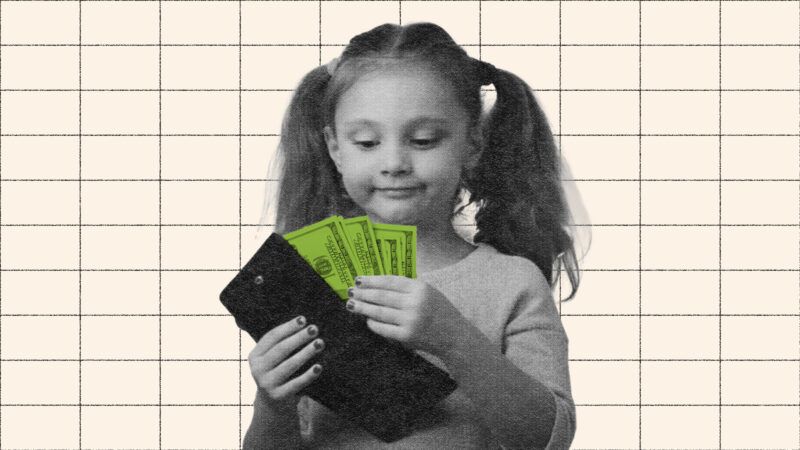IRS Sent $1.1 Billion in Child Welfare Payments to the Wrong People
Possibly the federal government's most efficient pandemic spending effort.

In the first five months of sending expanded child welfare payments to American families, the IRS wasted only about $1.1 billion.
In other words, this might be the federal government's most efficient pandemic spending effort—despite the huge amount of money sent to an estimated 1.5 million taxpayers who did not qualify for the payments.
An inspector general report for the Treasury Department released Tuesday details what the IRS got right (98 percent of payments were distributed correctly) and what it got wrong during the first five months of the expanded child welfare payments authorized by the American Rescue Plan, which cleared Congress in March 2021. The law increased the annual child tax credit paid to parents from $2,000 to $3,000 per child (and $3,600 for children under age 6) and made the tax credit fully refundable—meaning that parents could receive the benefits even if they paid no federal income taxes. Taxpayers with more than $75,000 in annual income or couples that earned more than $150,000 received smaller payments that phased out as income levels rose.
Effectively, it turned the child tax credit into a subsidy paid out by the IRS to parents in monthly installments. The boosted payments applied only during 2021, but the structural changes to how the child tax credit operates are permanent.
From July, when the law took effect, through November of last year, the IRS distributed more than $76 billion in child welfare payments. Of that total, about $1.1 billion was distributed to people who did not qualify for the payments, while another $3.7 billion should have been paid to about 4 million taxpayers who qualified, according to the report.
That means the IRS made about $200 million in fraudulent or wrong payments each month, which is simultaneously a staggering total and also a remarkably efficient result for a government spending program.
Compare that to other pandemic-era efforts that have been plagued by fraud. Earlier this month, federal prosecutors charged 47 people connected to a Minnesota nonprofit with allegedly stealing $250 million from a pandemic-era federal food program. That's the largest scheme uncovered to date, but it's only one data point in a constellation of wasteful and fraudulent pandemic-era spending.
An estimated 10 percent of the Paycheck Protection Program's $820 billion was stolen by fraudsters, and taxpayers ended up paying roughly $4 for every $1 of wages and benefits to workers. Meanwhile, the federally boosted unemployment benefits were an even more costly mess, with as much as 20 percent being wasted, according to a Government Accountability Office (GAO) report. Maybe the most wasteful effort of all was the federal aid to state and local governments, with taxpayers dropping about $800,000 per job saved, according to a National Bureau of Economic Research working paper.
The child welfare payments likely benefited from some structural arrangements that made the program less pervious to fraud. For one, the IRS already has piles of data about taxpayers and their dependents from years of filed tax returns. And rather than creating a new stimulus or welfare system out of whole cloth, the boosted child subsidies were merely piling more money and a different distribution system onto an existing tax credit. Eligibility for the boosted child subsidies was based on taxpayers' 2019 and 2020 tax returns, which were already filed before the program was announced.
In short, if your goal is to defraud the federal government, it's easier to do that with a fake company or a fake unemployment claim than with a fake child.
Still, the fact that this program resulted in more than $1 billion in wrongful payments in just five months despite all the structural advantages that it had over programs like the PPP says something too. Even when the federal government has all the tools it needs to effectively and correctly redistribute wealth, a large pile of money is going to be wasted in the effort.
By any reasonable standard, $1 billion in waste over just five months would be a failure. Grading on the government curve, however, makes this look almost like a success.

Show Comments (10)